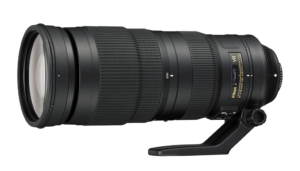Technical Artist is a creative and technical operator who communicates with the artist and programmer teams. He is an artistic genius or aesthete who is also a sound programmer. Technical artists use this knowledge to convert an artist’s visual content into an animated film or video game. So, they exceptionally fit into the film or gaming industry. However, they need graphic and programming skills to grasp both disciplines and solve problems across departments.
The primary focus of a technical artist is to retain the artistic vision while playing within the technical boundaries of a platform. Consequently, they work together with the developer and art team to find creative solutions for technical challenges.

What Does a Technical Artist Do?
Technical artists (TAs) assist artists in their work. They create game engines that are as user-friendly as possible for those who create art. If an artist wants to make something complicated, TAs will tell them if it’s technically viable and suggest the best approach to go about it. When the animation team requires complex rigging (building a moving skeleton), some studios may enlist the help of the TAs. They serve as a link between programmers and artists.

An excellent technical artist will maintain the aesthetic vision while working within the constraints of the software systems utilized in video game development. They collaborate closely with the Game Designer, Lead Artist, and Lead Programmer on technical resources, new technique research, tools, pipeline maintenance, and preparing digital files of finished artwork to run efficiently without aesthetic degradation.
What Is a Technical Artist? | Video Game Careers
By bringing technical artists into a company, programmers are relieved of the burden of designing and maintaining the game’s tools and pipelines. Of course, these items can still be designed and implemented by programmers, but technical artists are the driving force behind them. With easy-to-use tools and workflows, programmers can focus more on producing game code, while artists can focus on creating the most acceptable content possible.
When the assets are complete, the technical artist uploads them to the game engine, monitors their performance, and establishes workflow guidelines across the production process. He or she must be able to design new tools, which are commonly done using the scripting languages that come with significant modeling and animation products. Rendering techniques such as normal and specular maps, particle systems, and pixel shaders are also researched and implemented by technical artists.
What Are the Roles and Responsibilities of a Technical Artist?
In in-game development, the technical artist’s job is to bridge the gap between the artistic, programming, and engineering teams. To guarantee that all demands are satisfied, they must have an equivalent degree of expertise in each subject. As a result, they tend to be all-rounders who have worked in both the artistic and programming fields.
The role of the Technical Artist is critical to the success of a title since innovation in gaming walks a narrow line between creative quality and technical brilliance.

The Technical Artist’s responsibilities may include:
- Coordinating with the heads of the programming and design teams.
- For a project, conducting research and building technical tools.
- Creating art production workflows.
- In the 3D art pipeline, assisting artists and engineers.
- Assisting with the performance and validation of assets.
- During development, resolving tough technical issues.
- Choosing the software and tools needed for game development.
- Together with programmers, develop and maintain resources and pipelines.
- Adding completed artwork to the game engine.
- Ensure that the finished artwork has a complete visual resolution.
- Working within the game engine’s constraints, limiting file sizes, polygon counts, and loading times.
- Enforcing criteria established by department heads.
- Creating tools and software to meet the game’s requirements.
- Character systems like skeletons, textiles, effect emitters, and ragdoll collisions are prepared and designed.
- Creating physics barriers and optimizing environments.
- Writing custom software tailored to the game’s requirements and compatible with industry-standard scripting languages.
- Investigating and supervising the use of rendering techniques.
- Check whether frame rate and memory performance are improving.
- Identifying and resolving material defects and collisions.
- Maintaining technical documentation while monitoring the game’s performance.
- Develop systems that facilitate the artists and animators to create characters, environments, and textures.
- Load the graphic elements into the game machine, easing a programmer’s job and allowing them to focus on coding.
- Collaborate with an art director or lead artist to decide on the visual components.
- Ensures that every character matches the visual theme.
- Research novice techniques.
- Prepare digital files for completed artworks to ensure their efficient functioning.
- Analyze an artist’s vision from a technical point of view and devise strategies to translate the imagination to reality.
Skills Required to Become a Technical Artist
- Exceptional attention to detail.
- Proficient communication abilities.
- VFX training is a great way to start your career.
- A solid portfolio or demo reel demonstrating a thorough understanding of the art and animation pipelines.
- Knowledge of game systems and the development process.
- Scripting abilities.
- Ability to select the most appropriate tools and software for maximizing game delivery.
- Experience in rendering and post-effects.
- Rigging and animation knowledge is essential.
- Experience with physics simulations is a plus.
- Experience with shader development.
- Proportion, color, and composition are all high-level creative skills.
- Ability to solve technological problems and an innovative mindset.
- High and low-poly modeling, unwrapping, baking, texturing, level art, and other digital art content generation skills.
- Excellent interpersonal abilities in dealing with creative and technical team disagreements.
- High-level coding language knowledge.
Tools and Software that Assist Technical Artists
Technical Artists should have their knowledge set on the fundamentals of CGI, modeling, animation, and special effects software, and a solid understanding of platforms such as C++ and Javascript to blend assets into the game at the highest quality.
Technical Artists may use some or a blend of the following software:
- Python
- Houdini
- Lua
- C
- C++
- Java
- Perl
- 3D Studio Max
- MaxScript
- Unreal Engine
- Maya
- Adobe After Effects, Photoshop
- Substance Painter
Technical Artist vs. Technical Designer
Technical Artists have their hands on game engines, porting, and validating assets. As a result, they help the artists most effectively. In contrast, technical designers develop complex systems and technical game design elements with their skills.
Career Path of a Technical Artist
To become a technical artist, it would help if you had some prior experience working as :
- A texture artist
- Shading/ Lighting artist
- Character rigger
- Animator
- Character artist
- Experience with coding or programming
Types of Technical Artists
As a technical artist, you will often find yourself in the below designations throughout your career. Here are the types of technical artists’ careers:
1. Special Effects Artists
Special effect artists add life to objects and surroundings to enhance a film’s experience. While in gaming, they excel in providing an immersive experience for their players.
2. Animators
Animators create 2D and 3D animations to emphasize the movement of characters and other objects. They achieve this by creating individual frames that create the illusion of movement when put together.
3. Technical Director
Technical directors oversee the activities of the departments that deal with lighting, composing, and rendering. For this reason, they have to be a strong leader with high levels of interpersonal and technical skills.
Average Salary of a Technical Artist
The post of Technical Artist is a mid-level one. Starting as a texture artist, shading/lighting artist, character rigger, animator, or character artist is a common path to this position. Develop a great interest in coding and/or programming and experience with it.
A Technical Artist’s typical salary ranges from USD 45,000 to USD 106,000, depending on studio size and location.
Why Become a Technical Artist?
There are great reasons to seek a career as a technical artist. They include:
- You fall in the pay range scale that is generally higher than the average salary in the US.
- Since it demands you to be technically sound and creative, you get satisfied with your job once you see your audience enjoy your deliverables. In turn, this improves your productivity.
How to Become a Technical Artist?
After working in games for numerous years, people become technical artists. They either come from the art department, especially animation or programming. Take a look at the animator, generalist programmer, or 3D modeling artist job profiles for more information on how to get into the games business via these paths.
Top three challenges for technical artists
This is one of several game positions that necessitate both artistic and programming abilities. Try to integrate arts and sciences when in high school or college.

If you wish to go to university, A-levels, higher, or a BTEC in a combination of the following subjects might be beneficial:
- Art and design
- Graphic design
- Graphic communication
- Computer science
- Physics
- BTEC Diploma in Computing
Alternatively, you could pursue any of the following Level 3 occupational qualifications:
- BTEC Diploma/Extended Diploma in Art and Design
- A Diploma/ Extended Diploma in Art and Design
- BTEC Extended Diploma in Creative Digital Media Production
- OCR Cambridge Technical Diploma in Art and Design (Graphic Design)
- BTEC Diploma in Graphics
These Level 3 qualifications will provide you with the following skills if you wish to get a job right away:
- Aim Awards Diploma/Extended Diploma in Games Animation and VFX
- AQA Technical Level Entertainment Technology: Video Games Art and Design/Design Production
- OCR Technical Diploma in Digital Media
- AQA Technical Level IT: Programming
- OCR Technical Diploma in IT
- BTEC Diploma in Computing for Creative Industries

Start Building: Using software given by the companies, create game levels.
Obtain a Degree: Take a look at ScreenSkills’s animation course recommendations. It recognizes courses that provide instruction in relevant technologies, commit time to establish a portfolio, and have strong ties to the games industry. You might even get a degree in video games or computer programming.
Once you decide on your course of study, you have to follow the below steps to ensure a career as a technical artist.
Step 1: Enroll in the Course of Study
You have to enroll yourself in a school specializing in animation, visual arts, or technical subjects. Here you can select courses like
- 3D modeling
- Scripting
- Game development
- Computer graphics, or computer science.
Step 2: Work on Your Resume and Apply for Jobs
While preparing your resume, you have to highlight your relevant skills and work experience. In addition to including the tools and software you are proficient with, your portfolio can have some essential certificates worth pursuing and mentioning. They include:
Computer Science for Game Development
You can find this course on edx. Through this course, Harvard University helps you master core concepts in:
- Computer science
- Programming
- Software development
In addition, you will learn the fundamentals of:
- Game design
- Game development
- 2D/3D graphics
- Animation
- Collision detection
- Sound
As far as the software tools are concerned, you need a sound knowledge of Python, CSS, and JavaScript.
Unity Certified Expert: Technical Artist in Rigging and Animation
Unity, a leading game development platform, offers this course suitable for people with at least five years of experience in the gaming industry. It validates your skills in Python, MEL, Adobe Creative Suite, and MAXScript and your mastery of advanced Unity concepts.
Certificate in Game Design
Offered by the University of Washington, this course is designed to help you become a professional game designer. It lets you learn game mechanics and systems design that will help you while you solve complex challenges as a technical artist.
Networking
- Attend events such as gaming conferences and expos to meet people in the games business.
- Meet people and ask them about their jobs while displaying your interest and expertise in the field.
- Offer to provide them with your professional contact information and make an effort to stay in touch with them.
Look Beyond Games
Technical artist roles in animation and visual effects are also worth pursuing. You can then advance to games by honing your skills.
How to Become a Technical Artist
Conclusion
A technical artist is a relatively new position, but it is increasingly essential as consoles and PC systems become more complex. A technical artist collaborates closely with the lead artist, creative director, and programmers. They are responsible for building up and maintaining the art production workflow, determining which art packages and tools a studio should employ, researching new approaches, and then putting them into practice.














